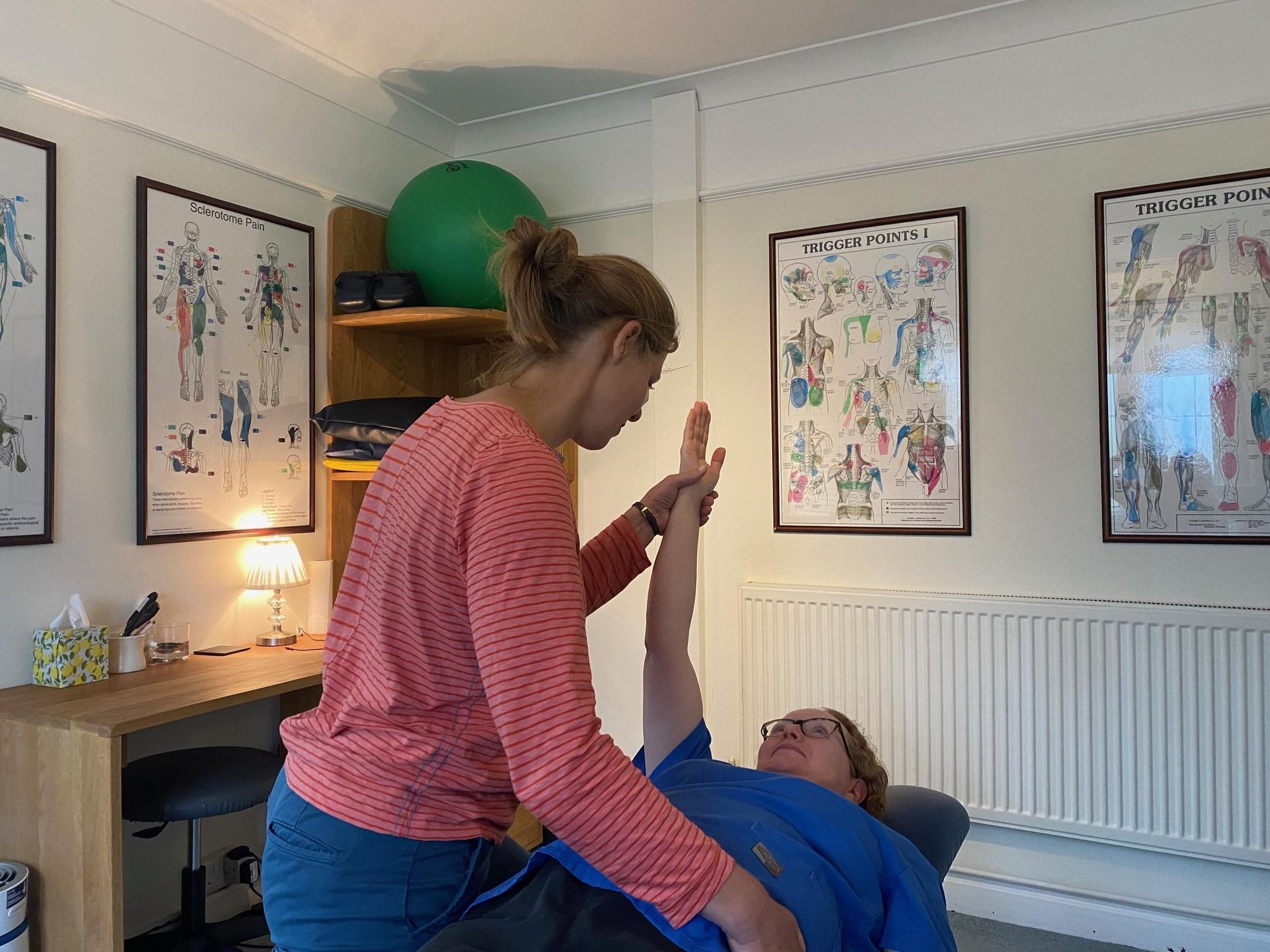Applied Kinesiology
WHAT IS IT?
Applied Kinesiology involves the practitioner performing a series of manual muscle tests on the patient. The practitioner is focussing on how the muscle responds when it is challenged, which helps them to decide where to apply treatment based on the theory that this can provide information about imbalances and stresses in the body. The treatment applied in the chiropractic setting is most likely to be an adjustment (manipulation) or soft tissue work. A process of muscle monitoring (biofeedback) will then be followed by retesting the muscles after an intervention has been applied to look for any changes.
At Haslemere Chiropractic Clinic, Fiona Ellis is our chiropractor who is trained in a form of Applied Kinesiology called Afferentology. Fiona uses Afferentology as a key tool in her practice. As part of a New Patient Consultation, Fiona starts with a full muscle testing assessment, in addition to the neurological and orthopaedic testing that would be performed by all chiropractors. If any muscles respond differently to what might be expected, for example by the quality of their response or their strength, Fiona uses this information to identify areas of interest. The results of her muscle testing assessment will be part of her decision making when considering how best to address the patient’s issues.
WHAT IS THE THEORY BEHIND APPLIED KINESIOLOGY?
Kinesiology is defined by the Cambridge dictionary as “the science of body movement”, derived from the Greek word for movement, 'kinesis'. The technique of Applied Kinesiology was developed by a chiropractor, George Goodheart, in 1964 to incorporate the understanding of muscle function with how the practitioner might use this information to help guide their interventions.
Muscles are the anatomical tool for creating movement in the body, so have an important role to play when considering musculoskeletal well-being. They are essential for protecting our bodies from injury and allowing normal movement. If they aren’t functioning properly, for example they are weak or slow to respond to what is happening in the joints that they move, this can make us more vulnerable to injury. Overactive muscles can also be problematic, and can lead to aches and cramping. It therefore makes sense for any musculoskeletal practitioner to be interested in how the muscles are performing.

Muscle activity is regulated by our nervous system. There is a loop of activity whereby the muscles send messages to the spinal cord and brain with information about what they are doing via the sensory neurones; the brain and spinal cord process this incoming information and send signals back to the muscles to control them. Sensory neurons within muscles provide most of the sensory input that we need for body position sense, co-ordination, movement and strength. For this information loop to work properly, the brain and spinal cord need to receive appropriate nerve messages from the sensory neurons in the muscles.
Manual muscle testing, that is a feature of Applied Kinesiology, is used as a tool to help determine where nerve messages may be interrupted by assessing how a muscle responds when it is challenged.
If you are interested in finding out more about Applied Kinesiology/Afferentology, call Reception on 01428 642778 to book a Free Chat Session with Fiona Ellis. If you are specifically looking for a practitioner who uses Applied Kinesiology, make sure that you book your Initial Consultation with Fiona.
